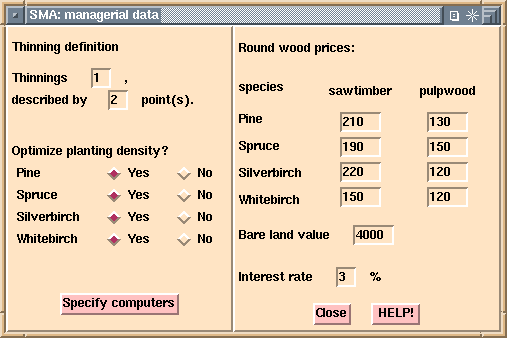

The thinning points define the accuracy of specifying thinning rates for trees with different diameters. Reasonable values are 1-5.
Interest rate, % Bare land value, FIM/ha
0 1 000 (Corresponds to average annual cash flow)
1 70 000
2 25 000
3 10 000
4 3 000